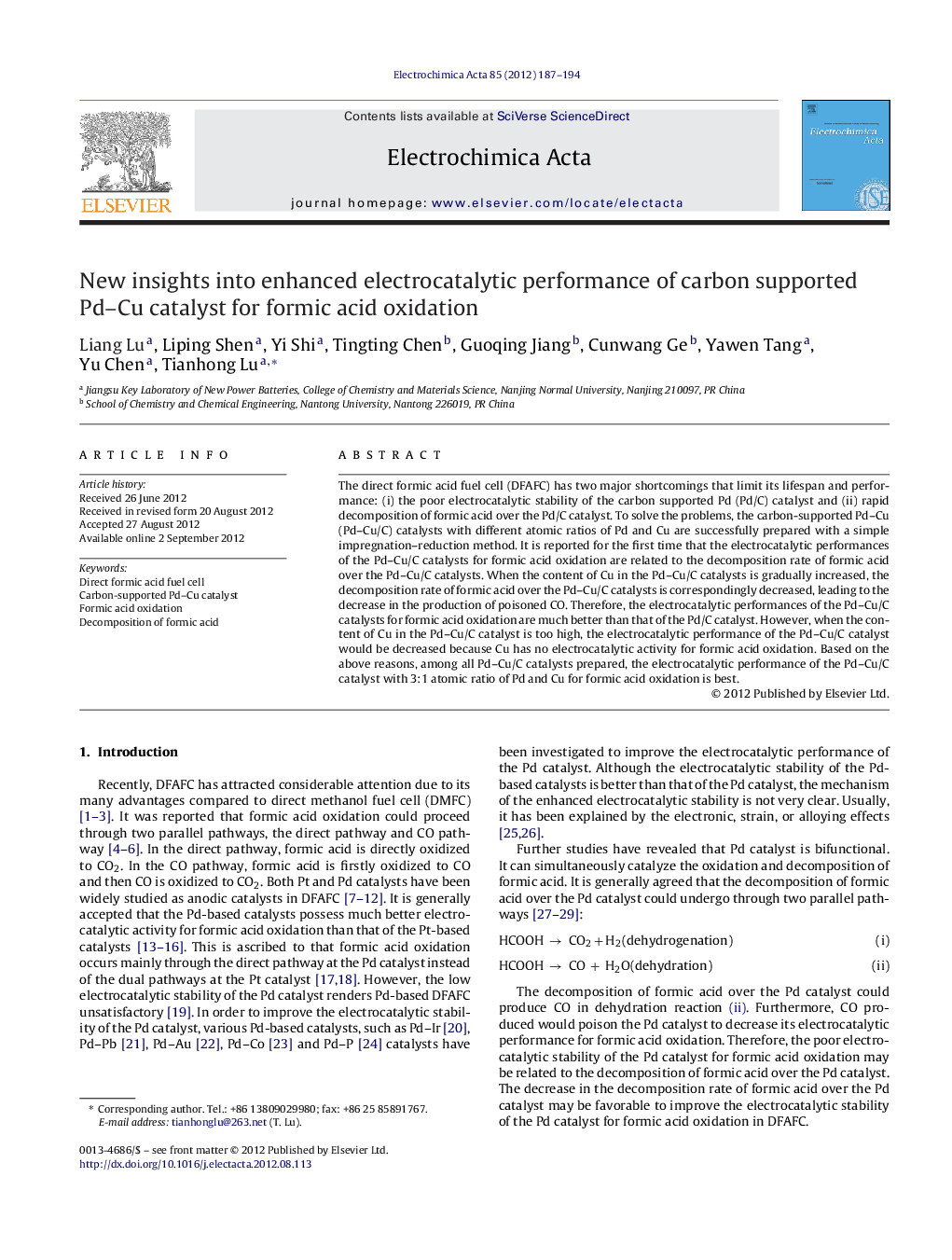| Article ID | Journal | Published Year | Pages | File Type |
|---|---|---|---|---|
| 187791 | Electrochimica Acta | 2012 | 8 Pages |
The direct formic acid fuel cell (DFAFC) has two major shortcomings that limit its lifespan and performance: (i) the poor electrocatalytic stability of the carbon supported Pd (Pd/C) catalyst and (ii) rapid decomposition of formic acid over the Pd/C catalyst. To solve the problems, the carbon-supported Pd–Cu (Pd–Cu/C) catalysts with different atomic ratios of Pd and Cu are successfully prepared with a simple impregnation–reduction method. It is reported for the first time that the electrocatalytic performances of the Pd–Cu/C catalysts for formic acid oxidation are related to the decomposition rate of formic acid over the Pd–Cu/C catalysts. When the content of Cu in the Pd–Cu/C catalysts is gradually increased, the decomposition rate of formic acid over the Pd–Cu/C catalysts is correspondingly decreased, leading to the decrease in the production of poisoned CO. Therefore, the electrocatalytic performances of the Pd–Cu/C catalysts for formic acid oxidation are much better than that of the Pd/C catalyst. However, when the content of Cu in the Pd–Cu/C catalyst is too high, the electrocatalytic performance of the Pd–Cu/C catalyst would be decreased because Cu has no electrocatalytic activity for formic acid oxidation. Based on the above reasons, among all Pd–Cu/C catalysts prepared, the electrocatalytic performance of the Pd–Cu/C catalyst with 3:1 atomic ratio of Pd and Cu for formic acid oxidation is best.
► Pd–Cu/C catalysts with different atomic ratios of Pd and Cu are prepared with simple method. ► All electrocatalytic performances of Pd–Cu/C for formic acid oxidation are better than that of Pd/C. ► It is due to no catalytic performance of Pd–Cu/C for decomposition of formic acid. ► Electrocatalytic performance of the Pd–Cu/C with 3:1 of Pd and Cu is best.
